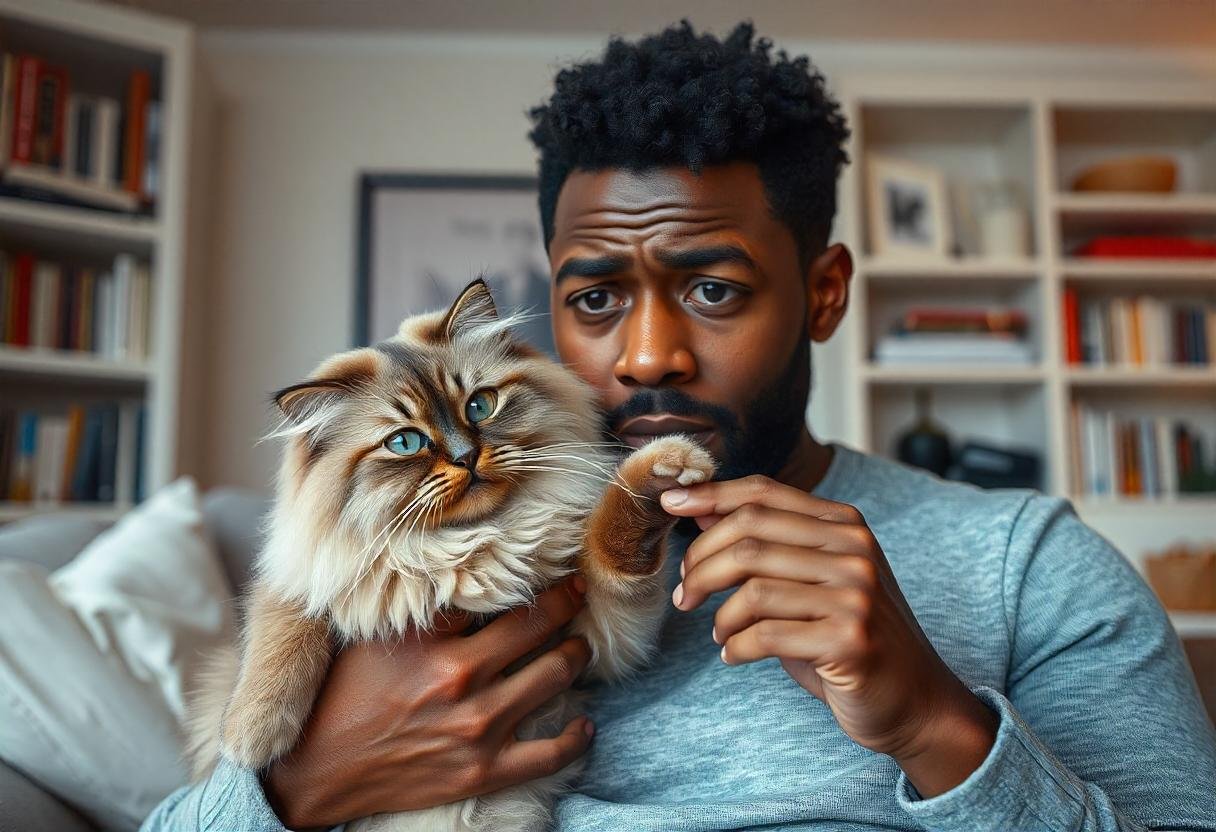Have you ever been innocently petting your cat, only to find yourself the target of a sudden, sharp bite? It can be a startling and sometimes painful experience, leaving you wondering what you did to deserve such a reaction. While cat bites can range from gentle nips to forceful chomps, they’re often a sign of miscommunication, a lack of understanding, or an underlying issue that needs addressing.
Understanding the Complexities of Cat Behavior
Cats are known for their unique communication style, which relies heavily on body language and facial expressions. They may use subtle signals to express their needs and emotions, but their communication can sometimes be misinterpreted by humans.
A Case Study: The Playful Bite
Luna, a 3-year-old Siamese cat, is a prime example of a cat who loves to play, but sometimes her playfulness gets a bit too rough. Her owner, Sarah, describes Luna’s biting as “a combination of adorable and slightly alarming.”
“Luna loves to pounce on my hands and feet when I’m trying to pet her,” Sarah says. “She’s got this thing where she’ll bat my hands with her paws, and then she’ll suddenly bite them. It’s not a hard bite, but it can still be a bit painful.”
Why Does My Cat Bite Me?
While it might seem like your cat is simply being mischievous, there are often underlying reasons for their biting behavior.
- Playful Aggression: Cats, being natural hunters and predators, often use biting as a form of play. They may bite during play sessions, especially if they’re feeling excited or overstimulated. This type of biting is usually gentle and accompanied by playful body language.
- Overstimulation: If a play session becomes too intense, your cat may start biting as a way to signal that they’ve had enough. It’s important to recognize your cat’s cues and stop the play session before they become overstimulated.
- Redirected Aggression: Cats may bite if they feel threatened or stressed. They may redirect their aggression towards you, even if you’re not the actual source of their stress.
- Pain or Discomfort: If your cat is experiencing pain or discomfort, they may bite as a defense mechanism. This could be due to a medical condition, an injury, or even a painful grooming session.
A Case Study: The Case of the Sore Paw
Whiskers, a 5-year-old Maine Coon, suddenly started biting his owner, David, after he had a minor injury on his paw. David describes Whiskers’ biting as “a sharp, defensive bite.”
“Whiskers was normally a very affectionate cat,” David says. “But after he injured his paw, he became very defensive and would bite whenever I tried to touch his foot. It was as if he was protecting his injured paw.”
The Importance of Recognizing Signals
Cats often use subtle signals to communicate their feelings and needs. Pay attention to your cat’s body language and facial expressions to identify any signs of discomfort or stress.
- Body Language: Cats use their body language to communicate their emotions. For example, a cat that’s feeling relaxed may have a loose, floppy body, while a cat that’s feeling threatened may arch its back and flatten its ears.
- Tail Movements: Cats use their tails to convey their moods. A cat with a wagging tail is often happy and playful, while a cat with a twitching tail might be nervous or anxious.
- Facial Expressions: Cats use their facial expressions to communicate a wide range of emotions. For example, a cat that’s happy may have a relaxed face with their mouth slightly open and their eyes half-closed. A cat that’s angry or threatened may have flattened ears, narrowed eyes, and a bared mouth.
How to Stop Your Cat from Biting
- Redirect Play: If your cat is biting during play, redirect their attention to appropriate toys. Use interactive toys that encourage chasing and pouncing, such as feather wands, laser pointers, or catnip mice.
- Stop Play When Overwhelmed: Watch for signs of overstimulation, such as a tense body, flattened ears, or a wagging tail that suddenly becomes still. Stop the play session immediately and give your cat a break.
- Avoid Punishment: Never punish your cat for biting, as this can lead to fear and anxiety. Punishing your cat will likely worsen the problem and damage your bond with them.
- Positive Reinforcement: When your cat is playing appropriately, reward them with praise, treats, or a favorite toy. This will reinforce positive behaviors and encourage them to repeat them.
A Case Study: The Power of Positive Reinforcement
Luna, the Siamese cat who loved to bite Sarah’s hands during play sessions, began to play more gently after Sarah started using positive reinforcement. Sarah would stop the play session immediately if Luna bit her hand, but then she’d redirect Luna’s attention to a toy and reward her with a treat when she played appropriately.
- Consider Medical Attention: If your cat’s biting is persistent or accompanied by other signs of distress, consult a veterinarian to rule out any underlying medical conditions.
The Importance of Understanding Cat Communication
Cats often bite as a way to communicate, but their communication style can be quite different from ours. By understanding their body language and facial expressions, you can better recognize their needs and emotions.
Conclusion:
While it might seem like your cat is being mischievous when they bite you, there are often underlying reasons for this behavior. By understanding the possible causes, recognizing your cat’s communication signals, and implementing positive reinforcement techniques, you can manage biting behavior and enjoy a happy, harmonious relationship with your feline companion.

Leave a Reply